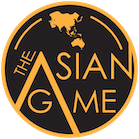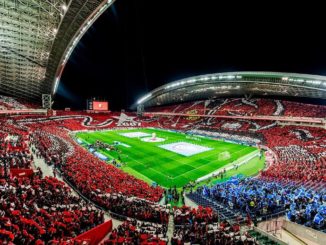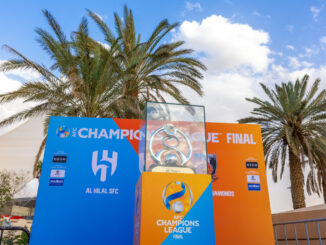
Not since 1994 has a Singaporean side played in a game of such magnitude.
Back then it was a pseudo national team, Singapore FA, playing in the Malaysia Cup that stirred the passions of the locals, with some 50,000 reported to have travelled north across the border into Malaysia for the final against Pahang at the old Shah Alam Stadium.
Singapore won 4-0 that day in a game that is still spoken about and revered within Singaporean football circles over 30 years later.
The captain of that team, the legendary Fandi Ahmad, can still feel the emotion of the night as if it were yesterday.
“Until today, I can still feel it,” he told The Straits Times last year.
“The whole team were shocked to see all the red flags and jerseys. We thought the stadium would be filled with Malaysian or Pahang fans, but instead it was like the whole of our Kallang National Stadium was in Shah Alam, can you imagine that?”
The feeling is the same for those who were part of that 50,000-strong contingent in the stands.
“It is a night that I can never ever forget,” long-time fan Razak Abu Samah told The Straits Times to commemorate the 30-year anniversary in 2024.
“Sometimes I do think of that night again and can feel emotional. We were all expecting a win and maybe that is why the stadium was so full. But even then, with the way it happened, it just felt like a dream.
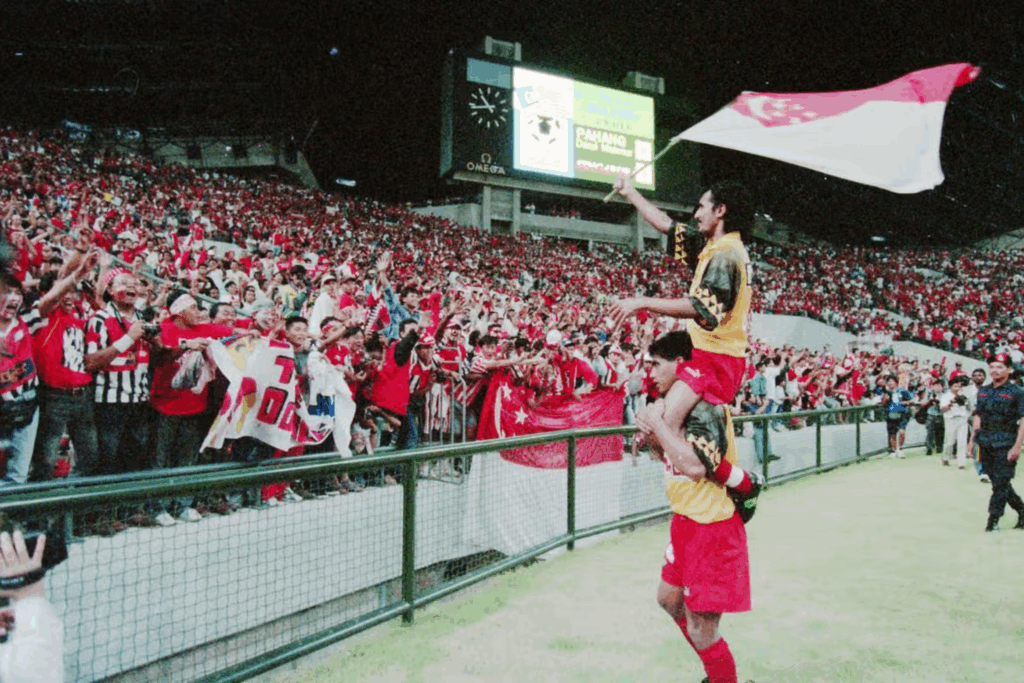
“You can ask anybody who went and they will tell you it was one of the best days of their lives.”
Come Saturday night, instead of reflecting on past glories, the modern day fan in Singapore might have a magical night of their own to celebrate for generations to come.
The crowd at the Bishan Stadium might not be as large as the contingent that travelled north over 30 years ago – even with the temporary increase in capacity – but the stakes are arguably higher now than they were back then.
While regional bragging rights fostered a powerful sense of national pride, continental bragging rights are something no one in Singapore had even dreamed of until a few short weeks ago.
But the city-state’s flagship club, Lion City Sailors, crowned domestic champions for the second time last week, stand just 90 minutes – or perhaps even 120 – away from the most remarkable, and unlikely, of continental crowns.
“It’s huge,” Deepanraj Ganesan, a journalist for The Straits Times, told The Asian Game.
“There has not been a bigger club match here. It’s significant for LCS and Singapore football. It’s going to show people that this club is serious in its ambitions and show clubs here what you can do if you get your act together.
“Corporates will also be seeing that you can get some form of returns. For Sailors’ owners, Sea is something prominently featured everywhere now. It’s a validation of the investment made so far, and it’s got people and youths rejuvenated.
“And a continental final being hosted in the heartlands (Bishan) is pretty dreamy even.”
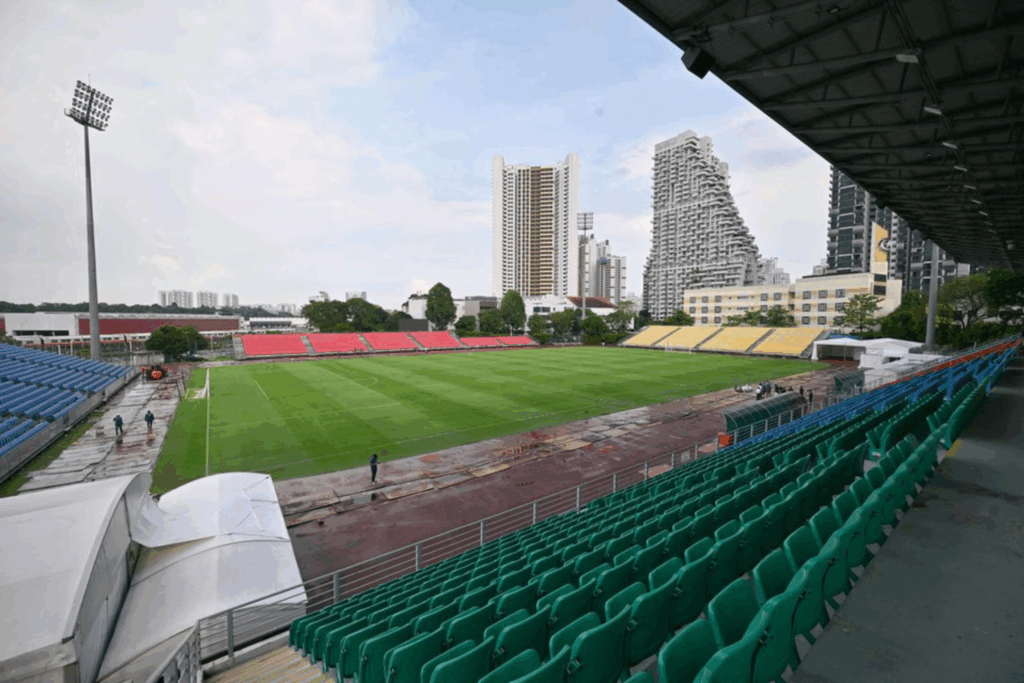
Dreams come true
The history of Lion City Sailors is a slightly complicated one. Officially they were founded only five years ago, in February 2020 just as the COVID-19 pandemic was about to wreak havoc on the entire world.
That is when they were taken over by Forrest Li, one of Singapore’s wealthiest men, worth an estimated $8.6 billion, and his Sea tech conglomerate, becoming Singapore’s first privately owned club in the process and the year 2020 appears on their badge.
But the club was not born out of thin air. Li assumed control of existing club Home United, a club originally formed in 1945 as the Police Sports Association, and which was rebranded in 1997 to Home United to reflect the fact it also represented other departments of the Ministry of Home Affairs, such as the Singapore Civil Defence Force and the Immigration and Checkpoints Authority.
The ‘Protectors’, as they were known, had a moderate level of success, with league titles in 1999 and 2003, together with a string of Singapore Cup triumphs.
They were no strangers to competing in Asia, either, making the AFC Cup semi-final in 2004, and the quarter-final on no less than four occasions, being crowned ASEAN Zone champions in the convoluted AFC Cup structure back in 2018.
As impressive as that was for a modest club from the small city-state, Li had a bigger, bolder vision of what was possible for a club team from Singapore.
“Sea is proud to be a Singaporean company, and we are proud to play our part in elevating Singapore football to the next level,” Li said upon taking ownership of the club in 2020.
“By uniting with a club with a rich heritage, exceptional fans, and a great organisation, we intend for Lion City Sailors to set a new benchmark for footballing excellence in Singapore and the region.
“As a passionate fan myself, I know that Singapore has a huge community of people who love football, and our hope is that Lion City Sailors will strengthen that passion and ignite a new era for the development of the game locally.
“We look forward to supporting the development of Lion City Sailors and guiding this great club into a new period of success.”
A first league title came just one year later in 2021 and looked to usher in a new period of domestic dominance for the Sailors. It took until this season to add a second, but the tide does appear to be turning in that direction and pointing towards an era of domination.
A spokesperson for Sea continued the ambitious rhetoric: “We aim to ignite that spark for local football and set an example by building a club that can be successful on the field, and successful and sustainable off the field.
“We recognise that sport can act as a powerful avenue to engage local communities and bring together people of all ages and backgrounds as we unite behind a shared passion. We believe in the massive potential of football in Singapore and that the country deserves to have a world-class football ecosystem and world-class teams. Our goal is for Lion City Sailors to represent our country with pride on the world stage.
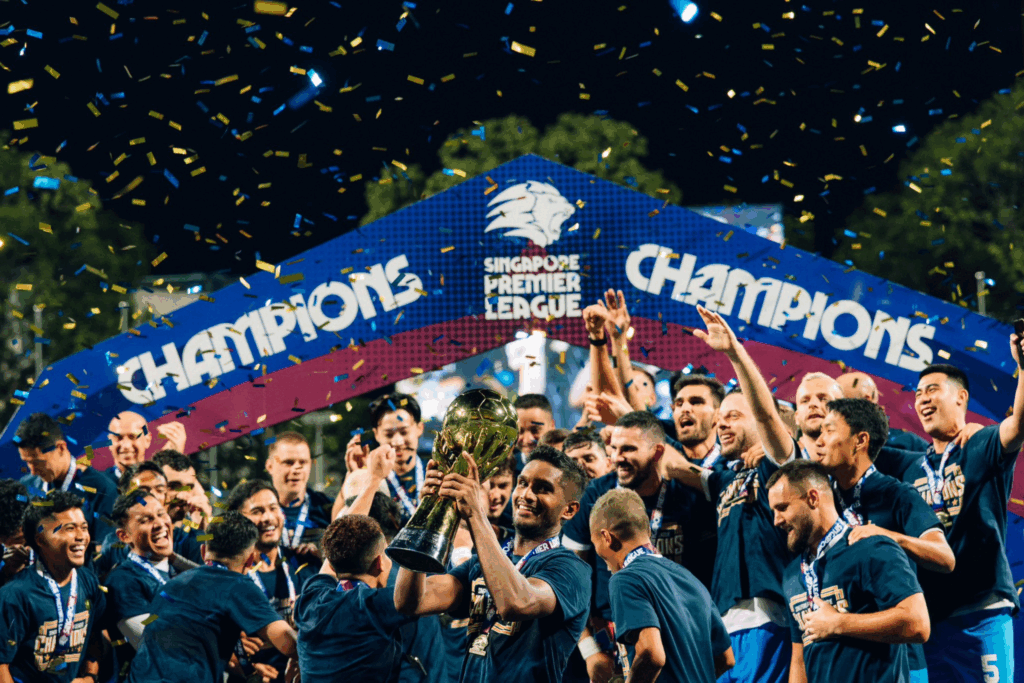
“The club has always had a great reputation for the standard of management and corporate governance – not just in Singapore but across Asia. We intend to build on these foundations and develop a club that Singaporeans can be proud of and stand behind.”
Cutting through in a Premier League playground
‘Igniting a spark’ and ‘engaging local communities’ are noble quests, but ones that are easier said than done in a city where the Premier League and European football dominates, at the expense of the Singapore Premier League.
Despite concerted efforts to grow the profile of the league, attendances remain stubbornly low, with average attendances sitting at under 1000 for the last three seasons. The Sailors, who are one of the best supported sides in the SPL, wouldn’t divulge what their attendances have been over the last few years.
It’s a long way from the sell out crowds Singapore was getting 30 years ago during their memorable Malaysia Cup run. So where have the fans gone?
Sell out crowds whenever Liverpool or Manchester United come to town provide a sharp juxtaposition to the often empty stands at SPL matches, and explains where many of those fans now reside – in their homes and bars watching European football, rather than in the stands watching their own local clubs.
Back in the 1990s there wasn’t the satellite television and streaming services offering the proliferation of football from the biggest leagues in the world that we see today. Times have changed, and Singapore football fandom has changed with it.
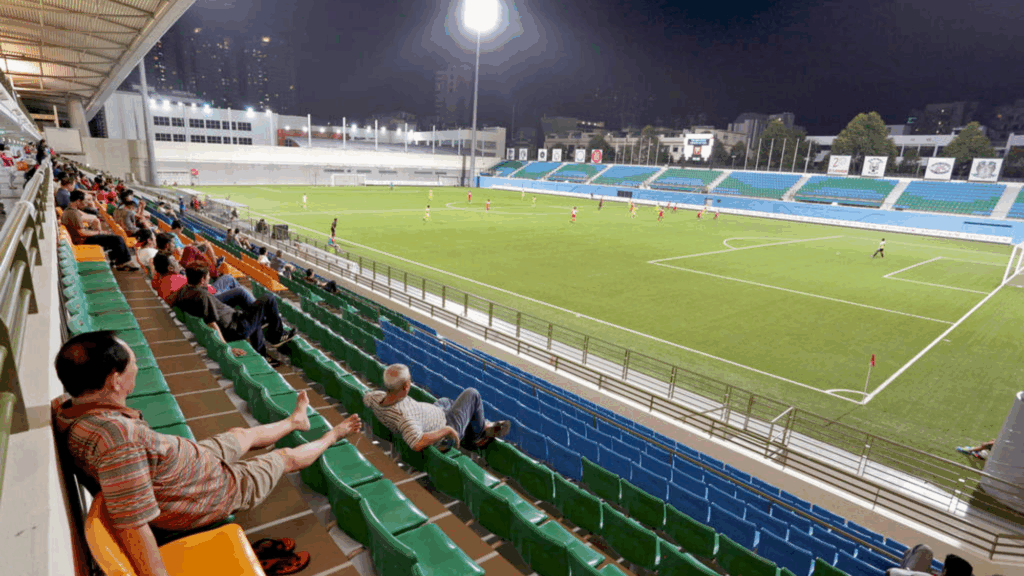
“It’ll be a constant challenge,” Ganesan explained.
“How do you convince someone who has spent his whole life following his beloved EPL team to part with extra time to follow his local team as well? It’s an impossible task at the moment and the way to go about it is to figure out what can draw the average Singaporean in.
“And one way, as we can see, is to produce winning teams and teams worth following. The Sailors have shown the way, now can the rest follow?”
Part of the problem, Ganesan explained, is the sub-par standard of the league makes it less appealing for fans to jump on board, especially when they’ve been raised on a diet of the world’s best football.
“The truth is that the SPL, at the moment, is not as competitive as it needs to be,” he said.
“Besides the Sailors and Tampines (Rovers), most sides are not at the level they should be at. Geylang have done reasonably well, but they are only as good as their first eleven and have no depth to compete with the two teams above them.
“This ultimately goes down to resources and at the moment, because of sub-par players and foreigners in some of these teams, the level is not great.”
There are a dedicated few that are trying their best to flip that script, however.
Eddy Hirono, also a avowed Arsenal fan, is a long time fan of the club, from back when they were known as Home United, and in 2021 started his own social media channel dubbed SailorFanTalk; styled somewhat after the famed Arsenal Fan TV and the countless number of fan produced networks appearing across the UK and Europe.
“I look forward to content such as technical analysis, post-match manager interviews, post-match player interviews,” the 37-year-old, who works as an in-house legal counsel as his day job, explained.
“I look forward to long podcasts where the podcasters are having a nice chat… this is the content I want to hear about local football, but not a lot of people are doing it. So, I’m a big believer in ‘don’t moan, don’t whine, just get your ass up and do it.’
“So I felt like maybe I can be the one to drive the change, or maybe I can be the one to contribute to the small pool of content out there, and I hope that that’s what I’ve done for Sailors fans with SailorFanTalk, and for the wider general public of Singapore football with the Kicking & Screaming podcast.”
Winning, more than anything, is what cuts through. Singaporeans aren’t alone in getting behind a winning team (the term bandwagon exists for a reason) and doing so in a continental competition certainly doesn’t hurt the perception of the local league.
“They’ve definitely made a splash,” Ganesan said.
“Singaporeans have certainly seen the impact Sailors have made in the ACL Two. A clear example is how quickly tickets were snapped up for the Final. Singaporeans love a winning team and as long as the Sailors are flying the flag and winning games, it’ll cut through.”
Conquering Asia
Success in Asia has always been a stated ambition of the club, but few realistically could’ve envisaged that the Sailors would be here in the Final when the campaign began last year, and certainly not after they lost the first leg of their quarter-final 6-1 against J.League heavyweights Sanfrecce Hiroshima.
But luck or fate, or however you want to describe it, was on their side. Hiroshima fielded an ineligible player and the result was overturned and awarded to the Sailors as a 3-0 win.
While there was an element of luck in that, there was nothing lucky about they way they held Hiroshima to a 1-1 draw in the second leg, or how they defeated Sydney FC 2-1 over two legs in the semi-final.
It’s that pursuit of continental success that attracted Socceroos defender Bailey Wright to the club back in 2023.
“In many ways, it’s one of the reasons why I wanted to come to the club,” he told The Asian Game Podcast in March.
“I wanted to help and be part of this journey in Asian Football and the AFC Champions League Two. Just me speaking openly and honestly, from the owners point of view, football is a great way to put places on the map, and when you think of Singapore, he wants people to think of Lion City Sailors Football Club.
“(So) it’s important we perform well in Asian competitions, for people to see and recognise that this is the team from Singapore, and we have an opportunity to do that as a club, and as players.”
With Gamba Osaka unlikely to make the same mistake that Hiroshima did, and with giants of China and South Korea in the form of Beijing Guoan and Pohang Steelers, plus one of the big Saudi clubs, possibly Cristiano Ronaldo’s Al Nassr, to take part next season, everyone around the Sailors knows this is very much a ‘now or never’ moment that is unlikely to be replicated in future years.
“It’s just a great chance for us to make history,” Hirono, who has travelled to China and Australia following Sailors this campaign, said of playing in the Final at their home ground.
“It’s a chance that will probably not come by again in a very, very long time, and I hope we make the most of it.”
Building for the Future
Hosting the game in Singapore has been both a blessing and a curse. The blessing is obvious, as it gives the Sailors a significant advantage in a one-off game.
But the furore and debate over the location of the final distracted from the euphoria, with warring statements from Sharjah and Sailors over the location of the final exposing a gaping hole in Singapore’s football infrastructure.
While close to $1 million was spent bringing Bishan Stadium up to standard for the final, they are temporary measures only and only further highlight the need for more infrastructure works, with no mid-sized stadium existing between the 6,000-capacity Jalan Besar Stadium and 55,000-capacity national stadium.
Plans are in place for a 10,000-capacity football stadium as part of a larger civic development in Toa Payoh, only a few kilometres south of Bishan Stadium, which will go some way to filling that gap, with construction scheduled to be completed by 2030.
Perhaps tellingly, the Sailors logo and branding appears on some of the concept imagery released by Sport Singapore and the architects responsible for the project, perhaps hinting at a move in the future.
The Sailors have been tight-lipped about any potential move, but writing in The Straits Times, the Chief of the Sport Infrastructure Group at Sport Singapore, Lim Hong Khiang, continued to hint at a possible relocation in the future.
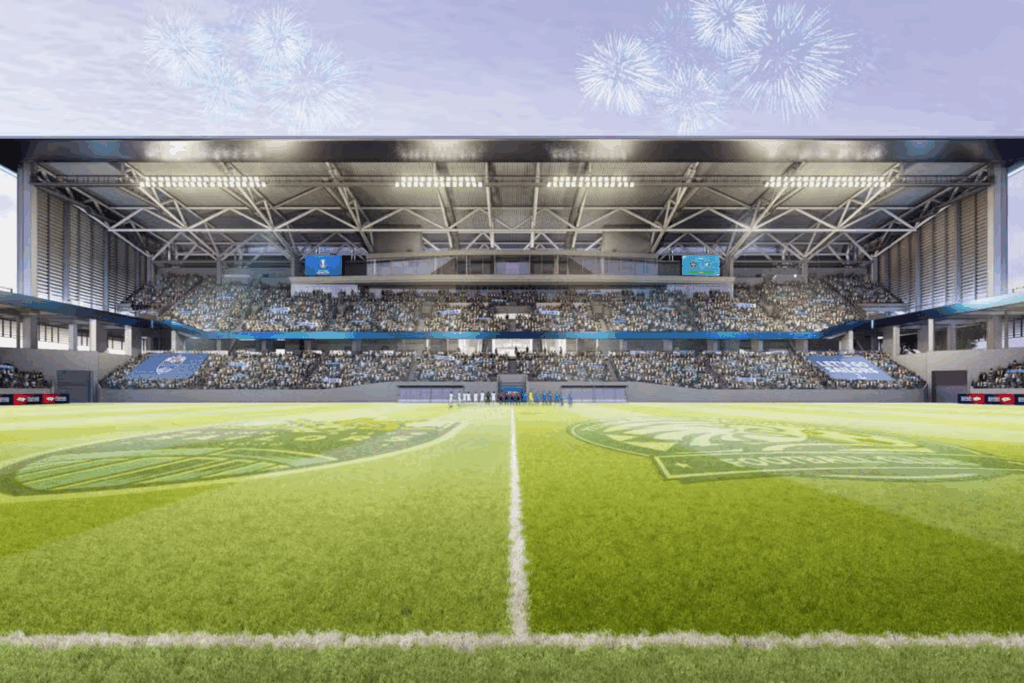
“Singapore is proud of the Lion City Sailors’ historic qualification for the AFC Champions League Two final,” he wrote in response to a letter from a local citizen outlining the infrastructure shortfall highlighted by the ACL Two Final.
“The Sailors have been working with various partners to explore viable homeground venues. Together with Sport Singapore, the Football Association of Singapore and sports industry partners, the Sailors are working on preparation works at Bishan Stadium to ensure it is ready for the upcoming final.
“We share Mr Pang’s views on developing multi-use spaces that cater to various segments of our community. In land-scarce Singapore, this has to be our approach in the development and rejuvenation of our sports facilities.
“One of our ongoing projects under our Sports Facilities Master Plan is the Toa Payoh Integrated Development, which has plans to include a 10,000-seater stadium, making it the second-largest football facility in Singapore, slated for completion by 2030.”
Four years ago, the Sailors had flagged their intention to build their own boutique stadium in Singapore, although no further announcements have been made since.
The costs associated with financing a stadium build in Singapore aren’t insignificant, especially factoring in the price of land on an island where there is a dearth of available land. What land is available, therefore, comes at a significant premium.
So partnering with a planned government-owned facility might be more financially prudent, while achieving the desired outcome of a new place to call home with the required level of facilities and capacity to host significant games in the future.
There have been significant infrastructure developments elsewhere, too, with the opening of their brand new, state-of-the-art training facilities on Mattar Road in 2022, which Li claimed was “…a symbol of our commitment to revitalising local football.”
The facility features physiotherapy rooms, a fully-equipped gym, an analysis room, as well as study facilities for the Club’s academy, alongside five football pitches – two 11-a-side pitches and three seven-a-side ones.
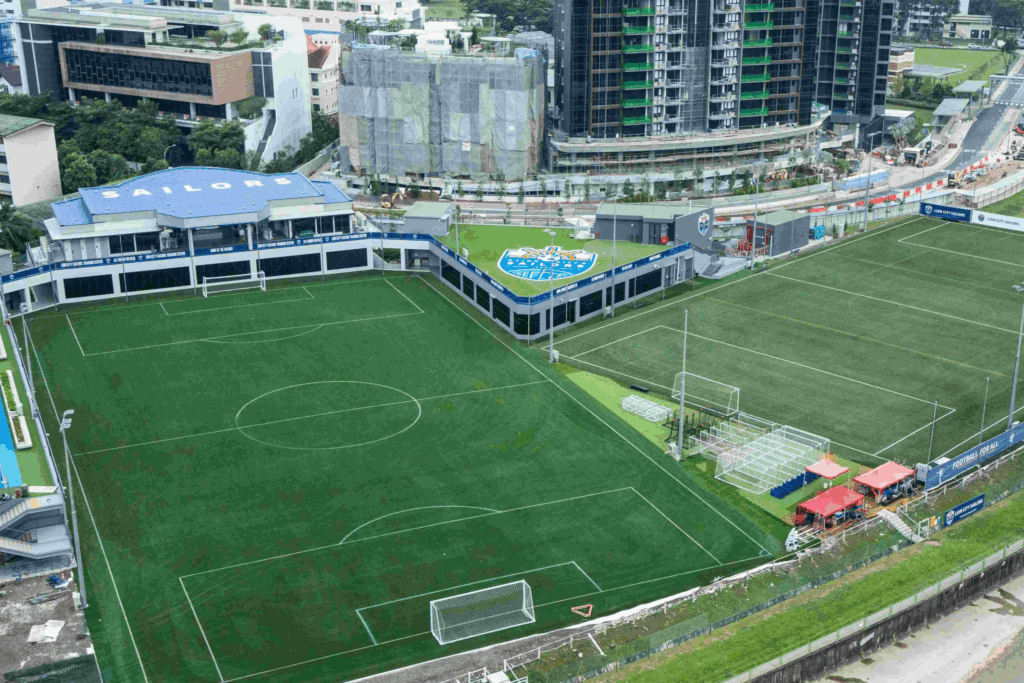
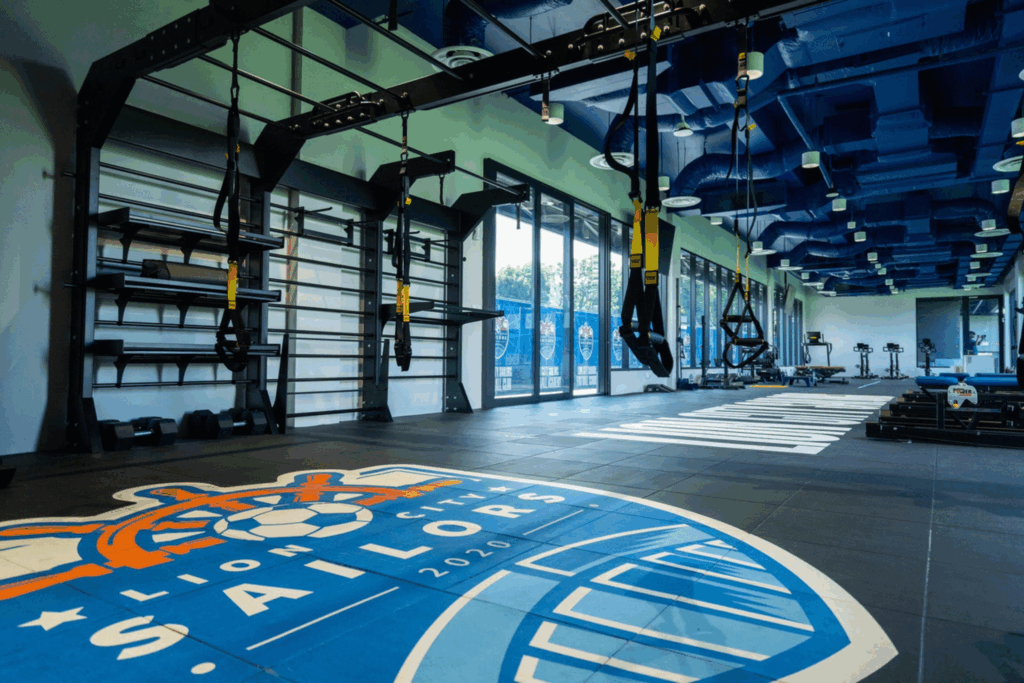
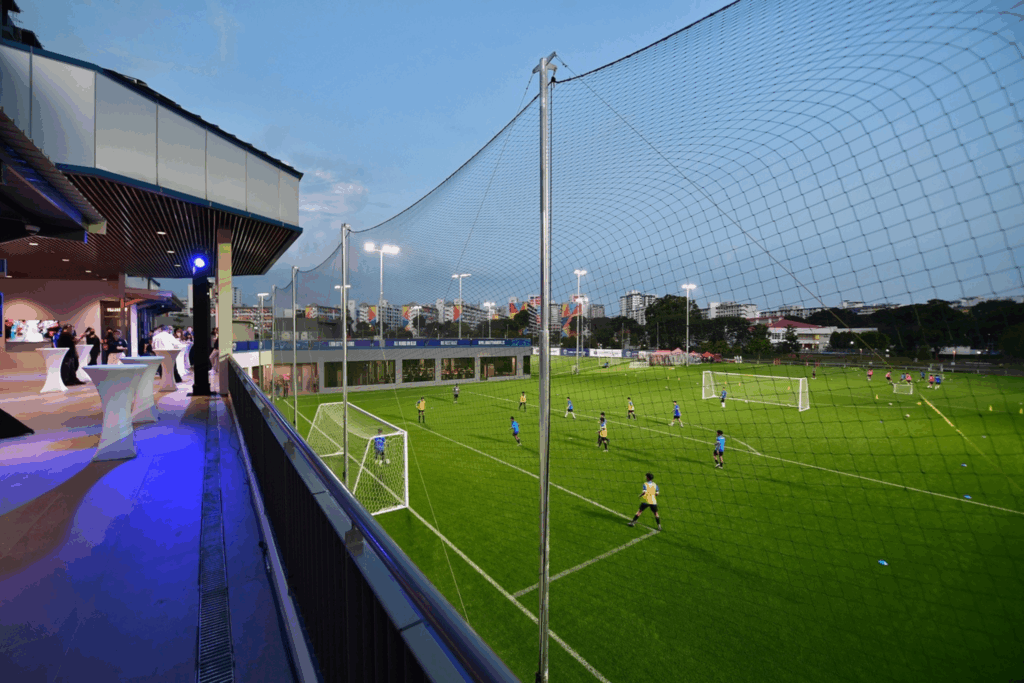
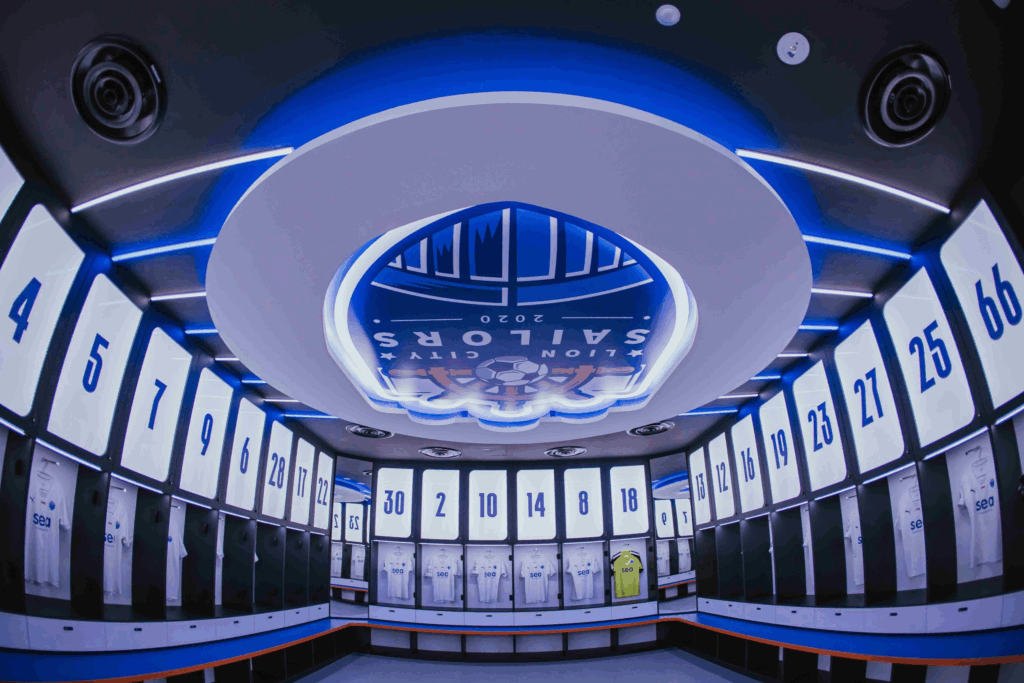
There is also fresh optimism in Singapore after the election of the Sailors owner as the new president of the Football Association of Singapore. Given the way he has turbocharged Lion City Sailors, there is understandable hope that he can have the same transformative effect for the entirety of the football ecosystem.
“Becoming your FAS council president today is a responsibility I do not take lightly,” Li said after being elected last month.
“As council, our team’s primary mission is to bring that joy and pride back to Singapore football. I believe we can do a lot to raise the standard of the sport, and bring positive energy back to Singapore football.
“As your council, we will focus on building up the fundamentals of a healthy football ecosystem, in five areas: infrastructure, youth development, partnerships, league competitiveness and administrative effectiveness.
“We have four years together to try to do things differently, and achieve what many think is impossible: revitalising Singapore football. We can do it.”
Ganesan, like many in the game, is optimistic for the future under Li’s leadership having seen the transformative effect he has had on Lion City Sailors.
“I’m very hopeful that this could be a game changer for the local game,” he said.
“I do believe it’s not just about Forrest but the stellar team he has assembled. A lot of the old guard have left, (and) there are going to be fresh ideas and new resources to tap on.
“The first thing to look at will be on how we can bring in investment into the SPL. I can imagine that Forrest and his team will be hard at work speaking to people they need to, and when they do, what better example than to show what Sailors have done since 2020.”
Main Header Image: X/lioncitysailors
Listen to Episode 245 of The Asian Game Podcast as we preview the ACL Two Final
